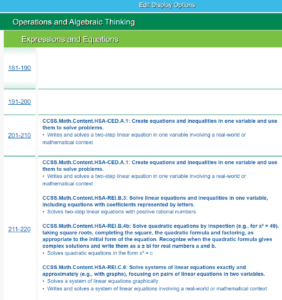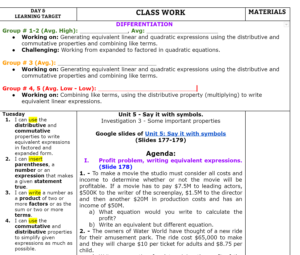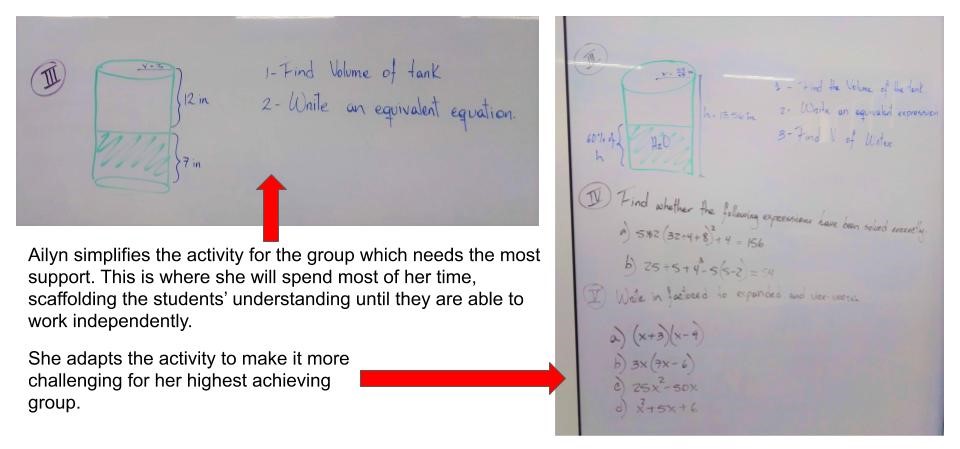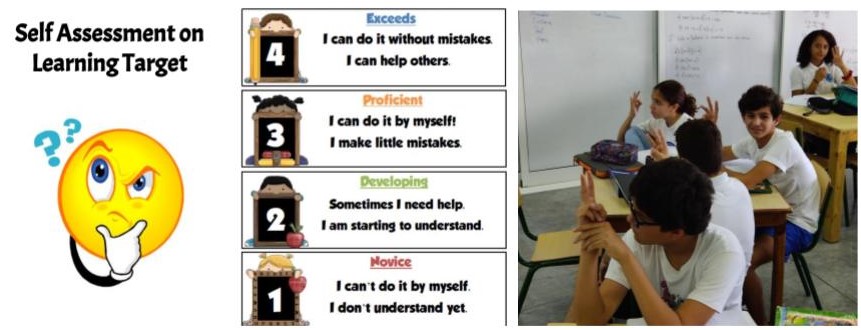Differentiation in Math Class
I walk into Ailyn’s math class, where I find a hum of activity. On one side, I see three students standing at the whiteboard wall, working on a problem and animatedly discussing solutions. Nearby, two students are on their laptops, working individually. At first I don’t notice Ailyn, but, looking around, I see her sitting at a table with five students, asking them questions. As she works with them, her eyes occasionally scan the room to see what’s going on. Then she gets up and goes to work at another table of three students.
The class that I’ve come to observe is known for being difficult to manage. The students not only have a wide range of abilities academically, but many of them are extremely active and tend to stray off-task easily. But I watch for an hour and all of them remain engaged and focused.
I meet with Ailyn to find out how she’s made this miracle happen and she shows me how she differentiates her classes to meet all of her students’ needs.
Planning for differentiation in math class:
-

MAP Growth continuum of learning targets for Algebraic expressions and equations.
Ailyn is currently teaching an algebra unit on equivalent expressions, so she began by looking at her MAP Growth results. (MAP Growth, it’s an individualized test that lets teachers know what students understand and what they are ready to learn next).
- She looks at her class breakdown by RIT score to see the develop,mental levels of her students. The RIT score shows where students falls on a continuum of achievement and helps the teacher plan for their level of understanding.
- She groups her students into five learning groups.

Lesson plan including differentiation
- Next, she looks at the learning continuum under the topic that she will be teaching (algebraic expressions) and finds the learning goals for each of her groups of students.
- She creates her lesson for the average students, but all of her students — with low average, average, and high average levels of understanding — will work on this activity. Each group will require differing amounts of support from Ailyn.

- Ailyn also complements her teaching with DeltaMath, a free online program which students can work on individually to practice mental math skills, to reinforce skills they may be weak in, or to be challenged with something new.
How a class runs:
- Ailyn projects the learning target for the day and unpacks it with her students, so that they know what their objective for the day is. She asks them to self-assess by holding up 1 – 4 fingers to show their level of understanding at this point. She does a quick scan of the room to see how confident her students feel and if they are in the correct groups.

- She projects an agenda for the day and students quickly get to work. She rarely spends time giving whole group lessons, instead using class time for hands-on work, ongoing assessment, and small group instruction.
- Ailyn moves around the room conferencing with students and teaching individualized lessons as needed.
- When students finish their work, they take out their laptops and open Delta math to work on individualized lessons and activities. These are meant to help students improve math understanding if they have areas of weakness, or to challenge them in areas of strength.
Tips for running a differentiated math class successfully:
Ailyn’s major worry when she began differentiating was that the grouping would hurt her students’ self-esteem. But she finds there are several ways to make sure this doesn’t happen:
- Growth mindset: using ongoing self-assessment helps students realize where their level of understanding is at and what they need to do to improve. They understand that if they’re in the group with the lowest level of understanding, they’ll get the support they need to move up.
- Flexibility: The groups constantly change. Students who are strong in an algebra unit may be weak in a geometry unit. As students gain understanding, they move to stronger groups.
- Heterogeneous grouping: The middle three groups (low average, average, and high average) are often grouped by students’ ability to work together, rather than their strengths and weaknesses. Students in the middle are not aware of who is stronger and who is weaker.
- Self-assessment: Ailyn empowers her students by having them hold up fingers to assess where they are on the learning target. This self-assessment puts them in charge of their learning. If they believe they have stronger or weaker understanding than Ailyn originally thought, she’ll check in with them to be sure.
- SWYCADs: Students in math class are assessed on “Show Me What You Can Do”s rather than quizzes. They assess their own understanding and realize how the amount of support they need to improve.
- Student-led learning: Students know that in order to improve, they may need practice certain math skills. DeltaMath is individualized so that they can work on their specific areas of need.
Results of differentiated learning
Ailyn began using differentiation this year and is thrilled with the results:
- All of her students are engaged. The lower groups get the support they need to feel successful and the higher groups feel challenged.
- The self-assessment helps students realize where they are in their learning and motivates them to keep growing.
- As students improve, Ailyn moves them to another group. Students who are strong in one unit may be weaker in another, so the groups are very flexible.
- Students are all making gains. Ailyn no longer worries that she may be leaving some students behind, or failing to challenge students who can do more.
- Ailyn says, “The best thing is the effect it’s had on my classroom management problems. This group used to wear me out, but now, most of the time, they come in, get to work, and remain focused. I’m not saying my class is perfect, but it’s much better than it used to be.”
Differentiation doesn’t need to be difficult and can be done so many different ways. If you’re using differentiation strategies that work for you, I’d love to hear about them in the comments.

Leave a comment